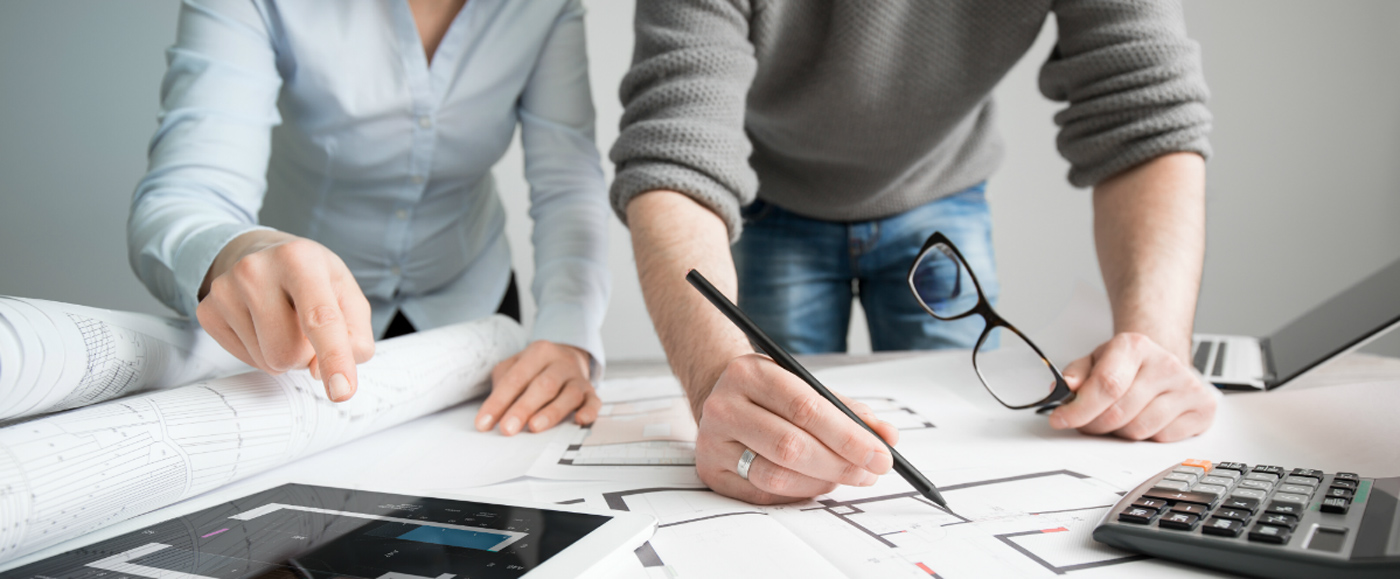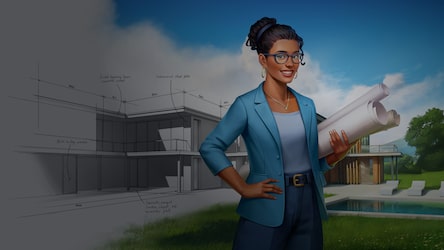Architect Guide to Eco-Friendly Building Materials
Architect Guide to Eco-Friendly Building Materials
Blog Article
Discover the Crucial Skills and High Qualities Every Architect Have To Possess
As a designer, you understand that success in your field exceeds simply technological abilities. It has to do with mixing creativity with practicality, cultivating cooperation, and taking care of projects properly. Each top quality plays an essential role in your capability to develop rooms that motivate and work well. However what are the specific skills that can genuinely establish you apart? Let's explore the necessary qualities every Architect should grow to grow in this ever-evolving career.
Imagination and Innovation
Imagination and innovation go to the heart of design, driving the style of rooms that influence and work flawlessly. As a designer, you'll require to believe outside package, pressing borders to produce one-of-a-kind solutions for your customers. You'll frequently discover brand-new materials, methods, and technologies to improve your layouts. Welcoming technology indicates staying ahead of patterns while being adaptable to change.
You'll likewise draw ideas from various sources-- nature, art, and also day-to-day life can stimulate fresh ideas. This capability to blend creativity with functionality permits you to deal with complicated troubles, guaranteeing your layouts fulfill both aesthetic and functional demands.
Strong Interaction Abilities
While developing remarkable rooms requires creative thinking, solid communication skills are equally as essential for architects. You need to share your concepts plainly to clients, professionals, and staff member. Listening is equally as important; comprehending your customer's vision helps you develop layouts that genuinely satisfy their requirements.
You'll often have to clarify complex principles in a manner that's simple to understand, whether you exist a proposal or reviewing materials. Reliable interaction promotes collaboration, making sure everybody gets on the same page throughout the project.
Structure partnerships is vital, also. When you establish trust fund and connection, customers are extra likely to share their concerns and comments, causing much better results.
Finally, do not undervalue the power of body language and visual help. They can enhance your message and make your presentations a lot more engaging. Strong interaction skills not just boost your styles yet additionally reinforce your professional partnerships in the building globe.
Technical Proficiency in Layout Software
As you browse the ever-evolving world of design, mastering style software application ends up being necessary for equating your imaginative concepts right into tangible plans. Familiarizing yourself with programs like AutoCAD, Revit, and SketchUp will not only boost your design capabilities however likewise enhance your operations. These devices enable you to develop comprehensive illustrations, 3D models, and even simulations that can help you imagine and present your concepts more efficiently.
Regularly upgrading your abilities and exploring brand-new functions can establish you apart from your peers, ensuring your layouts are precise and cutting-edge. Inevitably, technological efficiency in design software is a foundation of successful architecture, aiding you bring your visions to life.
Recognizing of Engineering Concepts

Comprehending engineering principles additionally enables you to anticipate prospective challenges early in the style process. When you recognize just how different products act under numerous problems, you can make educated selections that boost your layouts. Your designs need to not just be aesthetically pleasing yet sustainable and likewise useful.
Furthermore, a strong grasp of design concepts allows you to innovate within restraints. You can push imaginative boundaries while still adhering to safety and security standards. Eventually, this understanding improves your architectural method and establishes you apart in an affordable field.
Job Monitoring Talents
Efficient job management capabilities are essential for architects, enabling you to manage all facets of a project from conception to completion. You'll need to collaborate with numerous stakeholders, consisting of designers, customers, and service providers, making sure every person's on the very same web page. Establishing clear objectives, timelines, and spending plans is fundamental; it helps you maintain the task on course and within extent.
As an engineer, you should also be adept in jeopardy management, recognizing possible concerns prior to they intensify. Strong communication skills are very important, allowing you to verbalize your vision and encourage your group. You'll benefit from being organized and detail-oriented, as this aids simplify processes and prevent costly delays.
In addition, versatility is key; tasks frequently evolve, and being versatile enables you to respond efficiently to changes. Ultimately, your task administration skills can significantly impact the success of your building endeavors, guaranteeing you provide quality outcomes in a timely manner and within budget plan.
Attention to Information
While managing tasks is necessary, your interest to information can make a considerable difference in the top quality of your work. Every line you attract, every material you pick, and every small specification you keep in mind adds to the general success of a task. You require to be meticulous, making sure that your designs not just meet visual standards yet also stick to developing guidelines and codes.
Missing even a tiny detail can bring about costly modifications or safety problems down the line. By growing a keen eye for detail, you boost your ability to detect potential issues prior to they escalate. This alertness not only saves you time and sources yet also develops your reputation as a trusted Architect. Keep in mind, it's usually the smallest information that elevate a project from excellent to extraordinary. Welcome this ability, and let it direct your layout procedure, ensuring that your vision is executed flawlessly.
Flexibility and Problem-Solving Abilities
As a designer, you'll commonly face unanticipated modifications in layout and job needs. Your capability to welcome these changes and locate innovative services is necessary for success. Remaining adaptable in your method not just enhances your analytical abilities but also keeps your projects on track.
Welcoming Modification in Design
Embracing modification in layout is vital for engineers, specifically when YOURURL.com steering evolving customer needs and arising innovations. You need to grow versatility, as jobs commonly move instructions based upon brand-new understandings or restraints. Being open to transform enables you to discover ingenious methods and develop options that resonate with your customers.
When faced with challenges, your analytic abilities enter play. You'll see this frequently require to reconsider concepts and readjust intend on the fly, guaranteeing that the last end result aligns with the client's vision while satisfying safety and governing requirements. By being flexible and clever, you not only boost your styles yet additionally develop trust with your clients, proving that you can navigate the complexities of modern-day design efficiently.
Ingenious Solutions to Obstacles

Versatility in Job Administration
While navigating the complexities of project monitoring, adaptability comes to be a crucial property for designers. You'll typically Find Out More encounter unanticipated obstacles, from style changes to budget constraints, requiring quick reasoning and adaptability. Welcoming change permits you to pivot your methods and find innovative options, ensuring project success.
Strong analytic abilities are vital; they enable you to analyze scenarios, evaluate choices, and carry out efficient services on the fly. When dealing with varied groups, being open to responses and different concepts cultivates partnership and sparks creative thinking.
Often Asked Questions
What Educational History Is Required to End Up Being an Architect?
To end up being an architect, you'll require a minimum of an expert level in architecture, typically a Bachelor's or Master's. Completing an internship and obtaining licensure with exams is necessary for your profession advancement.
How Essential Is Networking in the Style Area?
Networking's important in design. It helps you build connections, discover task chances, and gain insights from experienced professionals. By getting in touch with others, you enhance your job leads and remain upgraded on sector patterns and developments.
What Are the Common Career Paths for Architects?
Common job paths for designers include design functions in firms, project administration, urban planning, and specialized locations like lasting design. Architect. You might likewise discover teaching or consulting, relying on your experiences and rate of interests
Just How Can Designers Keep Upgraded With Sector Fads?
To remain upgraded with market trends, you ought to regularly participate in meetings, join expert associations, subscribe to relevant publications, and engage with on-line discussion forums. Connecting with peers additionally aids you obtain understandings right into emerging developments in architecture.
What Role Does Sustainability Play in Modern Architecture?
Sustainability forms modern-day style by stressing energy effectiveness, resource conservation, and eco-friendly products. You'll produce spaces that minimize ecological influence, improve resident wellness, and respond to environment obstacles, making your designs more impactful and pertinent.
While developing amazing spaces calls for creative thinking, solid communication abilities are just as vital for designers. Strong interaction skills not just raise your designs yet likewise strengthen your specialist connections in the building world.
Efficiency in style software lays the foundation for a deeper understanding of design principles, which is crucial for designers.As an engineer, you'll commonly face unanticipated changes in layout and job needs.Embracing adjustment in design is crucial for designers, especially when guiding evolving customer needs and emerging modern technologies.
Report this page